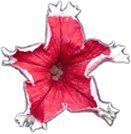
|
|

Planning a Lesson with
The Little Prince:
How to Write
a Found Poem
in the Target Language.
October 26, 2009
Interns:
For your next in-class assignment, you will practice an intermediate to advanced level activity that can be taught in one of your internship classes. The activity must connect to the Five Cs of foreign language learning: communication, culture, comparisons, connections, and community.
Objective: Students will be able to demonstrate knowledge of creative lesson planning by determining how they will create a found poem in the target language from excerpts of The Little Prince (Chapter XIV).
Materials: Handout of Chapter XIV in French, German, or Spanish. Markers and poster board.
Directions:
- In your language family, read the selection from The Little Prince and determine what language aspect (lexis, syntax) that you should target for a level III, AP, or native speaker class in order for them to create a found poem.
- Underline the targeted language aspect on your papers.
- Copy all the underlined elements on a piece of paper. Keep the elements in order and double-space between the lines.
- Eliminate any items that you think are unnecessary for you poem.
- Decide how you want to “design” the found poem.
- Copy the final version on your poster.
- At the bottom of the poem, write down the standards that apply to this activity.
- Present to the class.
What is a found poem?
"Found poems take existing texts and refashion them, reorder them, and present them as poems. The literary equivalent of a collage, found poetry is often made from newspaper articles, street signs, graffiti, speeches, letters, or even other poems.
"A pure found poem consists exclusively of outside texts: the words of the poem remain as they were found, with few additions or omissions. Decisions of form, such as where to break a line, are left to the poet."
Downloaded from
http://www.poets.org/viewmedia.php/prmMID/5780
For a printer friendly copy of this activity, please click the sand dollar.
STUDY GUIDE:
For a copy of the Chapter Seven Study Guide, click the petunia.
STUDY GUIDE:
For a copy of the Chapter Six Study Guide, click the daffodil.
Dr. FAB
Freddie A. Bowles
Assistant Professor of Foreign Language Education
Department of Curriculum and Instruction
College of Education and Health Professions
PEAH 314
University of Arkansas
Fayetteville, AR 72701
Office: 479-575-3035
fbowles@uark.edu
Different languages — I mean the actual vocabularies, the idioms — have worked out certain mechanisms of communication and registration. No one language is complete. A master may be continually expanding his own tongue, rendering it fit to bear some charge hitherto borne only by some other alien tongue, but the process does not stop with any one man. While Proust is learning Henry James, preparatory to breaking through certain French paste-board partitions, the whole American speech is churning and chugging, and every other tongue doing likewise.
— Ezra Pound, "How to Read," 1929

Planet Gnosis is directed by Dr. Freddie A. Bowles,
Assistant Professor of Foreign Language Education
in the Department of Curriculum and Instruction,
the University of Arkansas at Fayetteville.
Planet Gnosis is dedicated
to the exploration of education and teaching.
It is a cybersite of CornDancer.com,
a developmental web for the Mind and Spirit.
Submissions are invited.
|
|
|
 |








